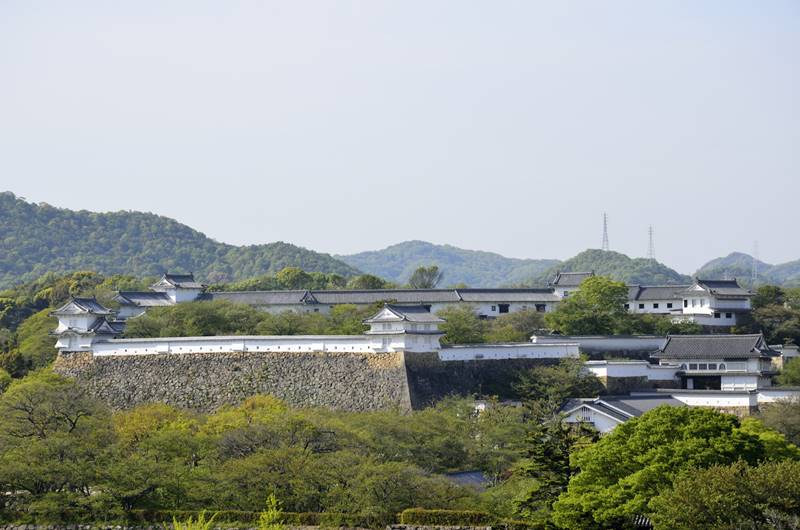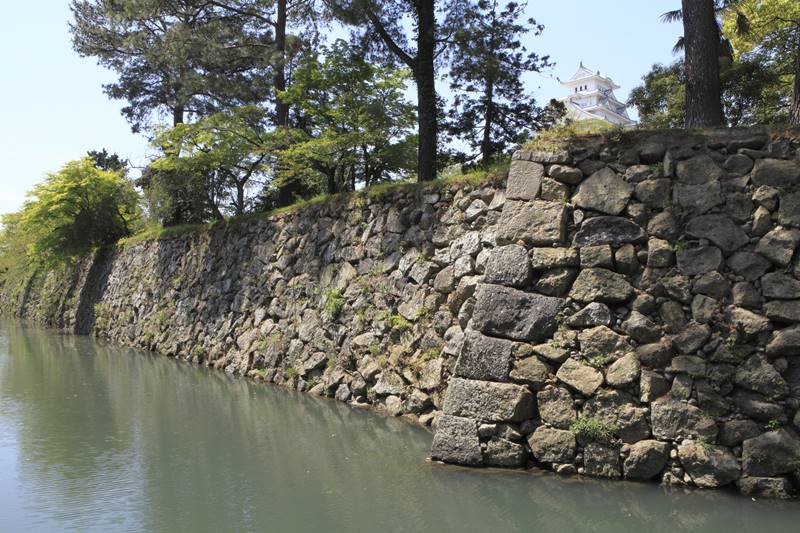This is all about Himeji Castle Ruins you want to know.
Every information you get on this site will be from a credible source based on Japanese history (books for reference).

Collected by the Inagaki family, the Toba Daimyō from the mid-Edo period to the Meiji Restoration, as materials for military studies. There are about 350 illustrations, but there is no uniformity because only illustrations of castles, illustrations including castle towns, and old battlefield illustrations are mixed.
Another typical example of a castle picture in the Edo period is "The Shōhō Shiroezu", picture of the castle and castle town that the Edo Shogunate ordered the daimyō to create and submit,aggregating military information such as the buildings inside the castle, the height of the stone wall, the width of the moat and the water depth, etc., it also details the location and shape of the castle town and the mountain river.
Profile : Himeji Castle Ruins
| Location | Himeji City, Hyōgo Prefecture |
| Also known as | Hakuro Castle (Hakuro means "White Heron", as if forever white and beauty ) |
| Type of castle | Hilltop |
| Mountain's name | Mt.Himeyama |
| Elevation | 45.6m |
| Condition | Original main keep |
| Designation | World Heritage Site National Treasures National Important Cultural Properties National Special Historic Site |
| Year built | 1346 |
| Abolished | 1871 |
| Castle lord | Akamatsu Sadanori |
| Refurbishment lord | Ikeda Terumasa |


The family crest was originally created from the pattern that the emperor and the royal family put on the kimono, and the pattern was made into a fixed pattern, and the one attached to his own oxcart is said to be the beginning of the family crest. The warlords drew large crests on the flag-fingers, used to distinguish enemy views on the battlefield, and used by the generals to determine which warlords were active and how much.
Himeji Castle admission
admission fee : 1000yen (over age18) 300yen(under high scool students)
admission time : am9-pm4
summer (Apri 27-August 31) : am9-pm5
【Caution】 There are many hills and stairs. There is no elevator and there are handrails, but they are very steep and narrow especially on the main keep . Therefore, unfortunately, wheelchair users cannot visit alone.
closing period : December 29 - 30 reference official site
Himeji Castle Google Map
Himeji Castle Images

The buildings were registered as World Heritage Sites in 1993. Because it is at the highest point of aesthetic perfection as a wooden building in the early 17th century.
The Large Main Keep is five-level/seven floor, height is 31.5m. This is a Bōrō-type castle tower with a double tower on an turret with a roof made of Irimoya. Unlike the earlier Inuyama Castle, which has a small tower, it is a late Bōrō-type castle tower with a good balance and is elegant. Himeji Castle has a lot of highlights such as the beauty of main keep and the complicated territory. Let's enjoy the skillful and practical castle construction while going around the many remaining gates.

Sofisticated design having white stucco exterior walls, gables of various styles including irimoya,kara,chidori,etc
It also called "Hakuro Castle" (白鷺城)because the beautiful appearance of the white plaster painted all outer wall is reminiscent of a white egret with wings spread in the sky, which can be enjoyed as a very attractive architectural style. In addition Killer whales on the roof are talismans for fire protection. It is about 19m high and 300kg. This killer whale was once mounted on top of the main Keep, which is an imaginary fish that discharges water in case of a fire.

An emotionally rich landscape never gets tired.

It is said that Himeji Castle began when Akamatsu Clan built a castle in Mt.Himeyama around 1346. It was built by Ikeda Terumasa, who carried out the extensive renovation work , such as existing main keep, many buildings between 1601 to 1609. Terumasa was married with the second daughter of Tokugawa Ieyasu, He participated in the Battle of Sekigahara as the Eastern Arm in 1600. He was recognized for his success in the battle, and became the first lord of 520,000 level daimyō of Harima region and the castle lord of Himeji Castle.



it is yaguramon gate at entrance of Ninomaru. Degoushi-mado window, katō-mado window and gold leaf crane fittings attached to Tategoushi-mado window add splendor to this gate.

Go through Hishinomon Gate and go straight to reach the gate of "Inomon Gate", at the first gate of the route going straight to the castle tower. We can experience various mechanisms (defense system) hidden in this castle.





When Ikeda Terumasa was relocated to Tottori Castle in 1617, Honda Tadamasa, hereditary vassals (fudai daimyō) , became the castle owner of Himeji Castle. Honda Tadatoki, the eldest son of Tadamasa, married Ieyasu's granddaughter Princess Sen(Senhime). She was married to Toyotomi Hideyori, and was rescued from Osaka Castle in the Siege of Osaka Summer Camp. Tadamasa and Tadatoki built the for Senhime in Mt.Sagiyama, west of Mt.Himeyama. Although there is no palace already, "Keshō Yagura(turret)" and "Watari Yagura" surround the northern part of the west from the western part. The interior of Keshō Yagura is tatami-matted, and the interior of the long-lasting Watari Yagura is a passage called the Hyakken(百間) Corridor. There were many rooms facing the aisle, and the room was a maid's room. Despite the facilities for Senhime and the maid, it has a bent part that can shoot arrows at enemies.It also had functions as a fort, such as stone dropping windows at key points inside.

Stone wall,said to have been worked on by a military master, Kuroda Kanbei (from Wikipedia)
In addition to the stone wall at the time of the castle construction by Ikeda Terumasa and of the addition of Nisinomaru by Honda Tadamasa, Himeji Castle has an ancient stone wall with Hashiba Hideyoshi era in the east of Hishimon Gate, Kamiyamasato Kuruwa, North of Ninomaru, and northern primeval forest, etc. The stone wall piled up with natural stones is "Nozura-zumi style". Usually only a few meters high, but it is said that Kanbei was able to build twice as high.



The stage of one of Japan's leading ghost stories,"Banshū Sarayashiki"
She is a woman in working in the inner part of a lord's residence (Edo period) and has been resented by passing through the plot of embezzlement of lord's family by rebel minister, Aoyama Tetsuzan. One of the ten plates, the treasure of the lord's family, was hidden, and she was accused of mismanagement, eventually being attacked and killed, thrown into a well. Then every night, a woman moans counting the plates heard from the well "One~,Two~”.



Link-1 : Japanese five castle of National Treasure
【west japan】Matsue Castle 【west japan】Hikone Castle 【central japan】Matsumoto castle 【central japan】Inuyama Castle 【west japan】Himeji Castle
Link-2 : Japanese three most great castle
【south japan】Kumamoto Castle 【central japan】Nagoya Castle 【west japan】Himeji Castle
Link-3 : Japanese three most great hilltop castle
【west japan】Tsuyama Castle 【west】Matsuyama Castle 【west japan】Himeji Castle
Link-4 : Original Main Keep
【west japan】Marugame Castle 【west japan】Bicchūmatsuyama Castle 【west japan】Matsue Castle 【west japan】Hikone Castle 【central japan】Inuyama Castle 【central japan】Matsumoto Castle 【central japan】Maruoka Castle 【north japan】Hirosaki Castle 【west japan】Kōchi Castle 【west japan】Uwajima Castle 【west japan】Matsuyama Castle 【west japan】Himeji Castle
Link-5 : A castle closely related to [block]24[/block]
【east japan】 Odawara Castle 【west japan】Odani Castle 【south japan】Nagoya Castle 【west japan】Ōsaka Castle 【west japan】Miki Castle 【west japan】Himeji Castle
